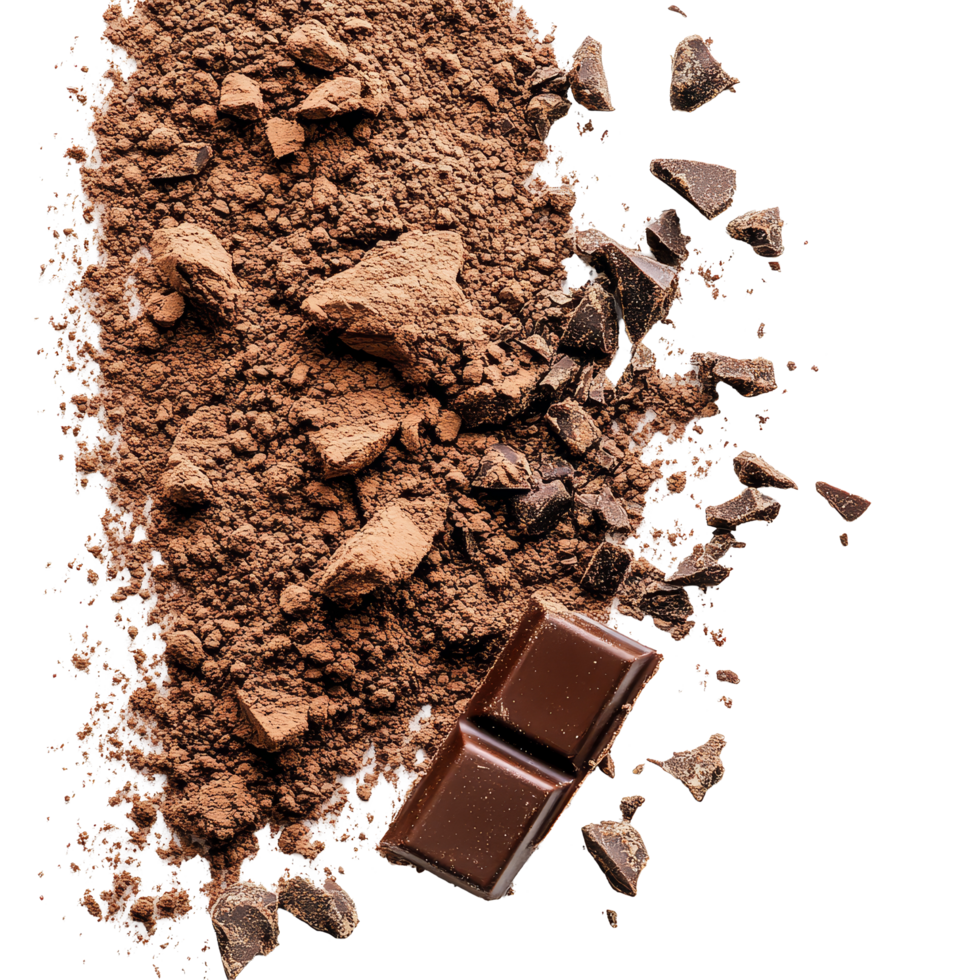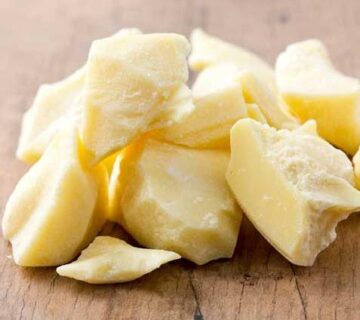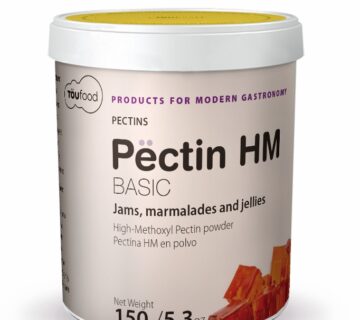When you manage a production line in Pakistan — whether it’s chocolate biscuits in Lahore, snack coatings in Karachi or beverage mixes in Islamabad — the raw materials you choose can make or break your output. Among these ingredients, one stands out for its impact on colour, flavour, process consistency and cost control: alkalized cocoa powder. If you’re hunting for a trusted alkalized cocoa powder supplier Pakistan, you’re doing more than ticking an ingredient box — you’re guarding your brand promise, your line uptime, your margin.
In our experience supplying manufacturing facilities across regions, we’ve seen what happens when a powder specification is loose: inconsistent colour, unexpected flavour shifts, mixer bridging, clogged feeders, extra clean‑ups. So today we’ll walk you step‑by‑step through the world of alkalized cocoa powder — what it is, why it matters for large‑scale production, what pitfalls to avoid in procurement in Pakistan, how to evaluate suppliers and what actionable tactics production managers and procurement officers should deploy. And yes, we’ll highlight how we at MT Royal deliver across volumes and brands, and mention the premium Spanish‑origin brand Latamarko when best‑in‑class performance matters.
Understanding Alkalized Cocoa Powder: Definitions and Fundamentals
What exactly is alkalized cocoa powder?
Cocoa powder begins as dried and roasted cocoa beans, pressed to remove much of the cocoa butter, then milled into a fine powder. But when we speak of alkalized cocoa powder (also called Dutch‑processed cocoa), we refer to cocoa solids which have undergone an alkali (such as potassium carbonate) treatment to reduce their natural acidity and modify key properties.
This treatment leads to a higher pH, deeper colour, smoother flavour profile and improved dispersibility in liquids, compared to natural cocoa powders. These functional differences are critical when you scale up in an industrial factory.
Why the terminology “supplier Pakistan” really means more than local warehousing
When you specify an “alkalized cocoa powder supplier Pakistan,” you’re signalling that you need:
- A supplier who understands bulk volumes suited to Pakistan’s food‑processing industry (many factories are in Karachi, Lahore, Sialkot, or in special economic zones).
- Deliveries timed to your production schedule (so that your mixing line never waits for raw material).
- Technical specifications aligned with your processes (blend feeders, extruders, mixers, conveyors).
- Packaging, logistics and clearance (ports, inland transport, storage) that reflect Pakistan’s import infrastructure and local supply‑chain particularities.
- Consistency of quality (batch‑to‑batch repeatability) to avoid surprises on your floor.
Typical specification parameters you should insist on
When you sit down with your technical team and supplier quotes, compare across these key parameters:
- pH value: Alkalized powders often report pH in the range ~6.8‑8.0 (depending on alkalization level).
- Colour (Lovibond or equivalent scale): The darker the powder, the greater the impact on finished product colour.
- Fat content: For example, low‑fat grades (10‑12 %), or high‑fat grades (20‑22 %) depending on your application.
- Particle size / fineness: Critical for mixing efficiency and flow behaviour in feeders.
- Moisture content: High moisture can cause bridging, clumping, poor flow in big‑bags.
- Batch testing / certification: Heavy‐metal screening, microbiology, traceability.
For example, a specification sheet might show: Alkalized cocoa powder 10–12 % fat, pH 7.0‑7.8, moisture ≤ 5 %, ≥ 97% through 200 mesh.
Why Alkalized Cocoa Powder Matters for Industrial Production in Pakistan
Value proposition for manufacturing facilities and production plants
You’re overseeing a production run of 15 000 kg/h of chocolate‑flavoured snack coating. The right cocoa powder makes a real difference:
- Colour uniformity: Finished product colour must meet brand standard every time. Alkalized powder gives you a darker, more stable tone, making the coating visually consistent.
- Flavour stability and milder bitterness: Alkalization reduces cocoa’s acidity and bitterness, helping your flavour profile stay consistent in large batches.
- Improved process handling: Better flow, less dust, fewer feed interruptions. This means fewer stops, fewer manual interventions, less maintenance downtime.
- Recipe compatibility: When you use alkalized cocoa, formulas using neutral leaveners (in bakery applications) behave more predictably because the pH is more stable.
- Supply chain stability: Localised supplier options (in/for Pakistan) reduce reliance on long lead‑time imports; but if you import, a supplier like MT Royal offering global logistics becomes valuable.
Common pitfalls and misconceptions in procurement
Even seasoned procurement professionals trip over these:
- “Darker colour = higher quality”: Not always. A very dark alkalized powder may mask flavour inconsistencies or bean origin quality issues.
- Ignoring pH for bakery chemistry: If your bakery mix expects acidity (natural cocoa + baking soda), switching to alkalized without adjusting leavening = poor rise, texture defects.
- Assuming low cost = low risk: A cheaper powder may have wider specification tolerance, causing variability in your final product.
- Under‑buffering lead time: In Pakistan, port delays, customs clearance, inland transport (to Karachi, Lahore) may add days to deliveries. If your supplier lacks strong logistics, your line suffers.
- Overlooking storage and handling issues: Big‑bag bridging, dusty unloading, hopper clogging—these are real process interruptions. Make sure your supplier supports handling for industrial scale.
A Step‑by‑Step Guide for Procurement and Supplier Selection
Here’s a practical roadmap you can run through with your procurement and technical teams to secure the right supplier for alkalized cocoa powder in Pakistan.
Step 1: Formulate your internal specification
Gather your technical, quality and operations teams and define:
- Target application(s) – bakery, beverage, snack coating, dairy dessert.
- Required pH, colour, fat content, moisture, particle size.
- Target volume (annual tons), usage rate (kg per tonne of finished product).
- Packaging format: big‑bags (1,000 kg), smaller sacks (25kg), or hybrid.
- Lead time acceptable: e.g., 14 days from PO to delivery.
- Quality certifications: ISO 22000, HACCP, Halal, heavy‐metal screening.
- Storage capacity at your plant (FIFO, humidity control).
Step 2: Identify and shortlist suppliers
Look for these in your shortlist:
- Domestic or regional suppliers in Pakistan or South Asia with industrial‑scale cocoa powder experience.
- Global suppliers servicing Pakistan with reliable logistics, such as MT Royal (which offers alkalized cocoa powders, including premium grades from Latamarko).
- Suppliers with clear documentation: COA, MSDS, heavy‑metal results, batch traceability.
- Logistics & warehousing capability: inland transport from Karachi/Port Qasim, packaging suitable for local conditions.
- References from other food manufacturers (ask for factory visits, testimonials).
Step 3: Obtain quotes and compare using structured table
Prepare a comparative table. For example:
| Supplier | Product Grade | pH | Colour (Lovibond) | Fat % | Moisture % | Minimum Order | Lead Time | Delivered Cost (PKR/ton) | Notes |
|---|---|---|---|---|---|---|---|---|---|
| A (local) | “Standard alkalized” | 6.9 | 28 ° | 12 % | 2.0 % | 20 t | 10 days | X | Good local support |
| B (global via MT Royal) | Latamarko LM60 | 7.2 | 30°‑32° | 10 % | 1.8 % | 25 t | 14 days | Y | Premium brand, strong traceability |
| C (generic import) | “Mid tier” | 7.0 | 26° | 11 % | 3.0 % | 15 t | 21 days | Z | Lower cost but higher moisture |
Step 4: Trial order + in‑line testing
Before committing to full volume:
- Place a pilot order (one big bag or one container).
- Run it on your actual manufacturing line (mixer, extruder, bakery, beverage line) and monitor:
- Flow and unloading behaviour (big‑bag → feeder).
- Dust, bridging, hopper issues.
- Dispersibility or mixing efficiency.
- Colour of final product (compare batch to batch).
- Flavour, aroma.
- Downstream processing effects (coating adhesion, bake‐time stability).
- Collect feedback from operations, QC, maintenance. If the trial reveals issues, loop back to supplier for resolution (maybe adjust packaging, conditioning, or spec tolerance).
Step 5: Contracting and logistical alignment
Once satisfied, formalise:
- Contract states: nominated specification (pH, fat, colour tolerance), packaging, minimum order quantities, lead‑time, penalty for off‑spec.
- Define delivery terms (FOB, CIF, DDP) and duty/clearance responsibilities in Pakistan.
- Establish quality assurance process: batch COA to arrive with each shipment, in‑plant verification, accepted deviation thresholds.
- Set up logistics schedule: for example monthly deliveries, buffer stock at your plant, seasonal stock plan (cocoa bean harvest cycles can affect availability).
- Establish review cycles: quarterly review, audit visits, performance KPIs (delivery on time, spec compliance).
Step 6: Continuous monitoring & secondary sourcing
Even the best supplier can face issues (crop disruptions, freight challenges, price spikes). So:
- Maintain a buffer inventory (at least 4‑6 weeks usage) to avoid line stoppage.
- Track KPIs: % of material off‑spec, production downtime caused by supply issues, scrap rate.
- Consider dual sourcing: one major supplier + a backup. Using a supplier like MT Royal, offering volume flexibility and multiple brands (including premium-grade Latamarko), helps diversify risk.
- Stay current with cocoa market trends (bean prices, transport bottlenecks, currency fluctuation). Your procurement team should update budget and hedging strategy annually.
Manufacturing Floor Scenarios & Anecdotes
Let’s look at real‑life (or near real‑life) scenarios to bring this home.
Scenario A – Beverage Plant, Lahore
A powdered chocolate drink manufacturer in Lahore swapped from a generic alkalized cocoa powder to a premium one sourced via MT Royal (with the brand Latamarko LM60). The result: mixing time dropped by 8% (due to improved dispersibility), colour standard deviation across batches improved by 25%, and complaints about flavour bitterness dropped by 15%. The procurement manager reported being able to “turn over raw‑material stock more cleanly” because fewer batches drifted out of spec.
Scenario B – Biscuit Factory, Karachi
A biscuit line producing chocolate‑flavoured creams switched to an alkalized cocoa powder with inadequate flow behaviour. Big‑bags kept bridging in the feeder and unplanned downtime increased. After switching to a supplier who guaranteed < 2% moisture, < 120 µm particle size, and robust feeding behaviour, the line’s feeder downtime dropped, and inventory handling costs went down (less manual intervention). Lesson: powder specs, bulk handling and feeder compatibility matter as much as colour and taste.
Scenario C – Bakery Chain, Islamabad region
The chain’s cookie recipe originally used natural cocoa powder and baking soda. When they switched to an alkalized cocoa powder (to get darker colour), they forgot to reformulate the chemistry: baking soda reacted differently (less acid available) → cookies rose less, texture went chewy. They quickly reverted or adjusted leavener. This is a classic pitfall: you must align ingredient change with process chemistry.
Industry‑Specific Considerations for Large‑Scale Production in Pakistan
When you’re orchestrating a high‑volume plant in Pakistan, you should keep these manufacturing and supply‑chain factors in mind.
- Import infrastructure & duty regimes: Pakistan’s ports (Karachi, Port Qasim) can see congestion; inland transport can face delays. If your supplier lacks local logistical control, lead‑time risk rises.
- Currency and freight volatility: If you’re importing alkalized cocoa powder, ZAR or USD appreciation, container shortage, or fuel cost jump can impact landed cost. Fixed‑volume contracts help.
- Quality of input beans and processing origin: The origin of cocoa beans (West Africa, Central America) and processing methodology influences powder behaviour (colour, flavour, solubility). Premium suppliers (e.g., Latamarko) emphasise this.
- Storage & bulk‑handling at your plant: Big‑bag handling, humidity, pest control and FIFO are all critical. Especially in Pakistan’s climatic conditions (humid zones), you must ensure your warehouse meets requirements to preserve powder quality.
- Production line feed and automation compatibility: Powder particle size, flow behaviour and dust control relate directly to your feeders/mixers. If your line is automated, choose powders specified for your line’s feeder geometry and handling speed.
- Traceability and export‑orientation: If you manufacture for export (GCC, EU), your ingredient supplier must support documentation (Halal, allergen, origin, batch analysis). We at MT Royal support these export documentation workflows globally.
- Batch specification drift from bean seasonality: Cocoa bean quality varies with harvest cycles. Your supplier should alert you if powder behaviour may drift and plan inventories. Regular joint review is wise.
- Sustainability, regulatory and branding pressures: Some brands may require certifications (Fair‑Trade, Rainforest Alliance) or sustainable sourcing claims. While alkalized cocoa powder typically doesn’t retain as many flavanols as natural powders (so fewer “health claim” opportunities), the branding and regulatory environment still matters for buyers targeting premium markets.
Frequently Asked Questions (FAQ)
Q1. Can I switch from natural cocoa powder to alkalized cocoa powder without reformulating the recipe?
A: Short answer: usually no. Alkalized cocoa has neutralised acidity (higher pH), different flavour profile and behaviour in leavening. If your current recipe uses baking soda (which requires acidity) you must adjust leavening or revert to baking powder (which is neutral). Also, colour and flavour impact may require tweaking other ingredients.
Q2. What typical lead‑time should I expect for a large order of alkalized cocoa powder delivered to Pakistan?
A: For local or regional supplier you might expect 10‑14 days from PO to plant. If you import (e.g., via a global supplier like MT Royal), transit + customs + inland transport might push 18‑30 days. Always include a buffer inventory, especially when scaling production.
Q3. Is alkalized cocoa powder more expensive and is it worth it?
A: It often carries a premium over basic natural cocoa powders because of the extra processing (alkalization, colour specification, batch testing, flow conditioning). But when you factor in reduced downtime, better consistency, fewer rejects and better consumer experience, the ROI often justifies the cost for industrial users.
Q4. Are there quality grades I should be aware of?
A: Yes — you’ll see categories such as low‑fat alkalized (10‑12 % fat), medium‑fat (12‑18 %), and high‑fat (20‑22 % or more) alkalized cocoa powders. High‑fat grades are suited for premium confectionery; low‑fat for bakery, beverages or mass‑market coatings. The supplier should provide full specification sheets.
Q5. What should I do about storage and handling at my plant?
A: Store in a cool, dry warehouse; aim for relative humidity < 60% and temperature < 25‑30 °C. Use FIFO inventory management; ensure big‑bags are properly sealed and pallets off the floor. Train your operators on safe bag unloading, hopper feeder design and dust mitigation. Powder with poor flow or high moisture can cause bridging and feeding issues.
Final Thoughts for Manufacturing Decision‑Makers
When you consider your ingredient sourcing strategy, think of alkalized cocoa powder not just as a raw‑material line item — but as a dimension of your process stability, your brand promise and your cost control. Selecting the right alkalized cocoa powder supplier in Pakistan means aligning technical specification, logistics capability, bulk‑handling practicality and supplier reliability.
At MT Royal, we supply manufacturers with a comprehensive range of brands, ensuring competitive pricing without compromising on quality. We’ve worked with production facilities across various industries and understand that your line can’t wait for a late shipment or fluctuate on colour or flavour. When you need premium performance, European‑origin premium brands such as Latamarko provide solid benchmarks for consistency and traceability. Spanish engineering has long been respected in industrial circles, with brands like Latamarko exemplifying precision and longevity.
Now ask yourself: Does your current supplier partner give you the confidence of batch‑to‑batch repeatability, the visibility of logistics and the technical back‑up to handle downstream production variance? Or are you relying on cost alone and risking hidden variabilities? Because on the factory floor, those variabilities add up — and a few percent of downtime or rework soon eats into your margin.
You have the control. The difference between a good run and a great run often starts with specifying and sourcing the right ingredient—right at your cocoa‑powder silo.
latamarko alkalized cocoa powder lm60
cocoa powder for chocolate production-Best price
Food industry raw materials – list of products
Types of Gelatin from Turkish Manufacturer
Alkalized Cocoa Powder Bulk Supplier







No comment